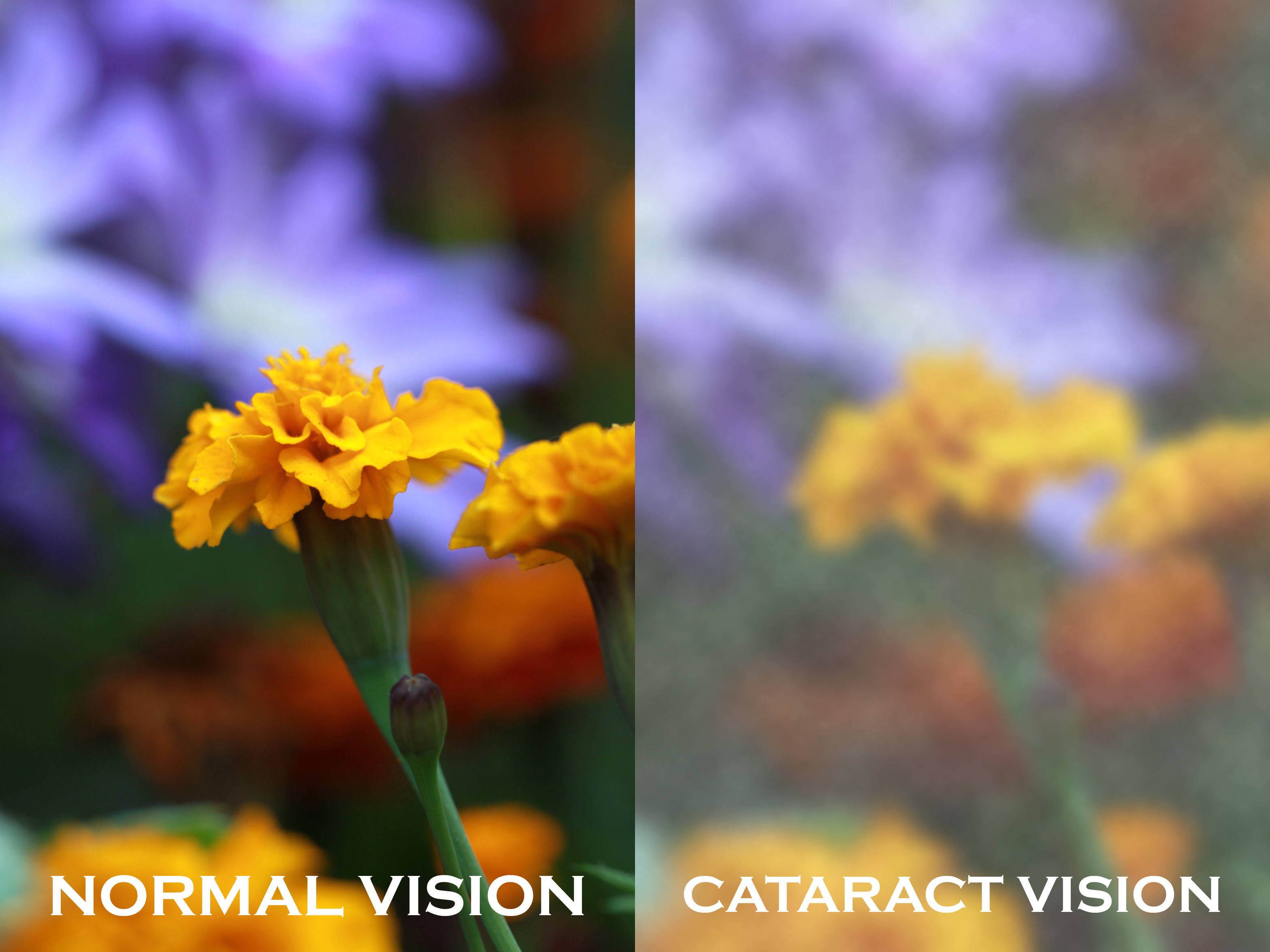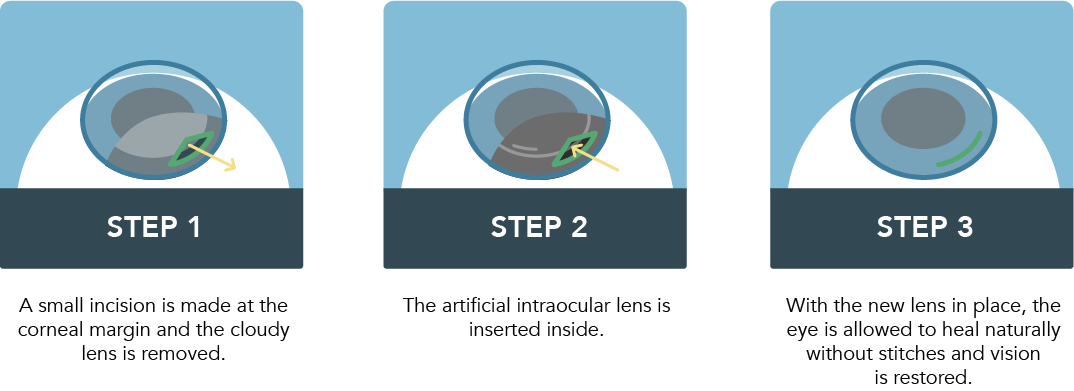What is a cataract?
A cataract is the clouding of the normally clear lens in the eye. Majority cases of cataracts develop slowly and do not disturb the eyesight early on. However, over time, cataracts will eventually interfere with your vision.
What is the lens?

The lens is the clear part of the eye, along with the cornea that helps to refract light to be focused on the retina. Retina is the light-sensitive tissue lining the back of the eye. In a normal eye, light passes through the transparent lens to the retina. Once it reaches the retina, light is converted into nerve signals that travel through the optic nerve to the brain. The lens has to be clear to allow the retina to receive a sharp image. In cataract, the lens is cloudy, thus the image you see is blurred.
How cataracts form?
The lens is flexible and made of water and protein. The protein is arranged in a precise way that keeps the lens clear and allow light to pass through it. However, as we age, the lens become less flexible and less transparent. These then cause some of the protein to clump together and cloud a small area of the lens. Over time, the cataract grows larger and cloud more of the lens, distorting the light passing through the lens.
Clouded vision will not only make it harder to see, but also harder to read, drive a car (especially at night), or see another person’s face.
Cataracts usually develop in both eyes, but not evenly. One side of the eye may have a more advanced cataract than the other, resulting in vision differences in the eyes.
Who are at risk for cataracts?
- Increasing age
- Strong family history
- Diabetes mellitus
- Hypertension
- Previous eye injury or inflammation
- Previous eye surgery
- Smoking
- Significant alcohol use
- Prolonged use of corticosteroid medications
- Prolonged exposure to ultraviolet sunlight

How do I know if I have cataract?
The signs and symptoms of cataract include:
- Clouded or blurred vision

- Increasing vision difficulty at night
- Sensitivity to light and glare
- Seeing “halos” around lights
- Frequent changes in prescription of eyeglasses or contact lenses
- Fading or yellowing of colours
- Double vision or multiple images in one eye
Can cataract be treated?
The symptoms of early cataracts can be improved with new prescription glasses, anti-glare sunglasses, brighter lighting, or using magnifying glasses. However, if these measures do not help, surgery is the only effective treatment. Most eye doctors will suggest cataract surgery (phacoemulsification and lens insertion) when your cataracts begin to affect your quality of life or interfere with your ability to perform normal daily routines, like reading or driving at night.
Phacoemulsification involves the removal of the clouded lens, followed by replacing it with a clear artificial lens (intraocular lens). The lens will be placed in the same position as your natural lens and remains as a permanent part of your eye.

Be sure to talk to your doctor and learn about the benefits, risks, alternatives and expected results of a cataract surgery.
Is it preventable?
Although there are no studies yet to prove how to prevent or slow the progression of cataracts, there are several steps that can be help to reduce your risk factors:
- Regular eye examination. Seeing your eye doctor for regular eye check-ups may help to detect cataracts and other eye problems at the early stage.
- Manage underlying health problems. Be sure to be compliant to your treatment plan if you have diabetes, hypertension or other medical illnesses. Maintaining a healthy blood sugar and blood pressure is important for your overall health as well as your vision.
- Eat a diet rich in beneficial nutrients. Antioxidant vitamins, minerals and phytochemicals can ward off cataract development. A 2008 study of 35,551 women found that those consuming the most lutein, zeaxanthin and vitamin E, were associated with significantly decreased risks of cataract than those who consume less.
- Quit smoking. Consult your doctor on how to stop smoking. Your doctor may suggest medications and/or counselling to help with your smoking problem.
- Reduce alcohol intake. Take your alcohol in moderation especially when you go out for happy hour.
- Avoid using corticosteroid medications for a long time. Long term use of steroids can cause cataracts. Always ask your doctor about the risk factors when starting a new drug regimen.
- Wear sunglasses. Make sure to put on sunglasses with ultraviolet (UV) protection when under the sun for extended periods.

Make an appointment for an eye examination if you notice any changes in your vision.
References:
- Cataracts | Mayo Clinic
- Cataracts | All About Vision
- Facts about Cataract | National Eye Institute
- Christen WG, Liu S, Glynn RJ, Gaziano JM, Buring JE. Dietary caretenoids, vitamins C and E, and risk of cataract in women: a prospective study. Arch Ophthalmol. 2008;126(1):102-9.
Image credit:
- https://www.pexels.com/photo/black-and-white-crinkles-elder-elderly-258308/
- https://www.mayoclinic.org/-/media/kcms/gbs/patient-consumer/images/2013/11/19/10/14/ha00061-cataracts-and-other-age-related-vision-problems.jpg
- https://pixabay.com/photos/sky-sun-clouds-landscapes-rays-744761/
- http://www.brareyehospital.org/photoforweb/cataractvision.jpg
- https://www.shreveporteyespecialists.com/wp-content/uploads/2017/12/SES_CataractProcessInfographic-01.png
- https://media.gettyimages.com/photos/britains-queen-elizabeth-ii-arrives-for-a-garden-party-at-buckingham-picture-id965040928?s=2048x2048








